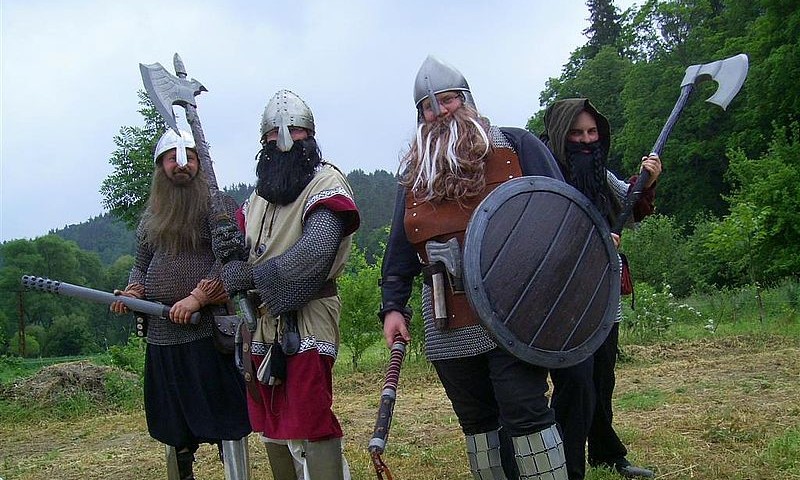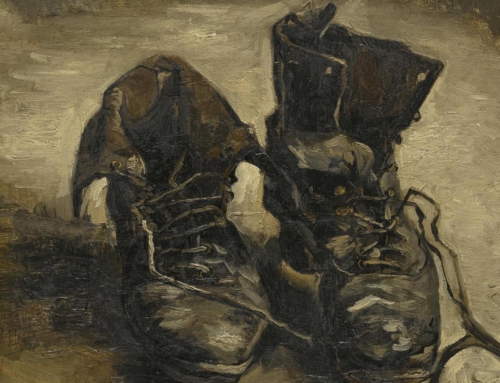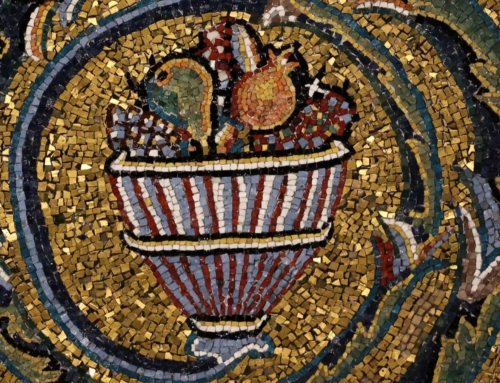I currently reside in the Kingdom of Atlantia, the royal highnesses being Logan Ebonwoulfe and Esa Kirkepatrike. Should I want to join a local canton or clan, I would need to contact Duchess Kalisa Aleksandrovna, the Chatelain for Atlantia. You too live within some kingdom, with its own royalty, and can locate it on this map, thanks to the Society for Creative Anachronism (SCA), which currently identifies nineteen kingdoms throughout the “Knowne” world. (The Knowne world is the earth.)
Every summer, about 10,000 noble warriors and their trusted companions (all affiliated with the SCA) gather in Butler County, Pennsylvania, for a few weeks of battle and Dark Ages-esque recreation. Men and women take a break from their cubicles and classrooms. They pack their cars with armor, fresh mutton, tents, broadswords, and other medieval stuff for some good old-fashioned, artificial carnage. This annual battle is called the Pennsic War, and it has been raging for forty years. Apparently two kingdoms (the Kingdom of the East and the Kingdom of the Middle) continue to have some sort of disagreement and need to fight it out each year. But this intractable belligerence has not deterred thousands of eager LARPers from all over the world from attending.
LARP is the acronym for live-action-role-playing. It’s often associated with really creative events, like this guy throwing lightning bolts, but also includes SCA happenings like the Pennsic War, where warriors do battle and enjoy medieval recreation, staying in character all the while. Basically, LARPing refers to an event where the participants assume fictional roles in real time and interact with each other according to rules appropriate for whatever fictional world their characters represent. It’s a way to make medieval/fantasy-themed games and dreams come true…sort of.
A Dominican friar would obviously fit in at the Pennsic War. With knights, squires, ladies, and minstrels present, why not have religious? Of course friars would not (or at least should not) engage in combat, but we could still see to the spiritual needs of the community, attend to the “dying,” etc. The addition of friars would only help round out the time warp. But such a situation naturally brings up the question: what makes a friar different from a LARPer?
Now, to some extent, everyone plays a role in God’s plan of salvation. God calls all of us. First, he calls us out of nothingness into being. And we are all unique parts that make up his beautiful and gratuitous gift of creation. Then he calls each of us to play a role in his providential plan. We can see this especially under the aspect of a Christian’s vocation. As a priest, religious brother or sister, married person, or consecrated layperson, one has certain duties to fulfill that go along with that vocation. So from that perspective, our life can often look like a LARP. It’s live, requires activity, and implies playing a role.
But though this role is often dramatic, it is not just “play.” So, thankfully, the analogy breaks down when we look at all a vocation implies. Take a Dominican friar, for example. We do not assume names, wear antiquated garb, and live in a monastic setting at one moment, only to abandon it all the next. Religious life is just that. It’s a life. Religious are committed to God, the Church, and each other in the form of consecrated life. Moreover, the features of this life, like religious names and habits, are not taken on for dramatic flare or because they resemble the medieval world. These features do resemble the medieval world, but they are more than that. The name and the habit are sacramental. They are signs that signify a deeper reality. They point to what we pursue interiorly. We take saints’ names because we seek to follow them in our way of life and are even now incorporated into their communion of friendship stretching from heaven to earth. We wear habits as a sign of our consecration to God and our striving for purity. The habit also is a sign of our continuity with those friars who have worn it through the centuries and passed it down to us. All the exterior trappings of the life form the friar spiritually.
There are prima facie similarities between, say, a car salesman who goes medieval at the Pennsic War and a schoolteacher who becomes a friar. But there are important differences too. We don’t become friars as a form of creative anachronism. It’s a permanent way of life that forms us on the inside. We hear a call from God that entails living a certain way. We accept the call and all it entails. It’s not fantasy.
So let me rephrase my first paragraph. I am a Dominican friar. I live at the Priory of the Immaculate Conception in the Province of St. Joseph, my provincial being Fr. Kenneth Letoile of the Order of Preachers. Should you want to become a friar in our province as well, please contact our vocations director. You too live within (or near) a Dominican province and can find it here. And no, I don’t LARP for God. I live for Him.
✠
Image: LARPers







